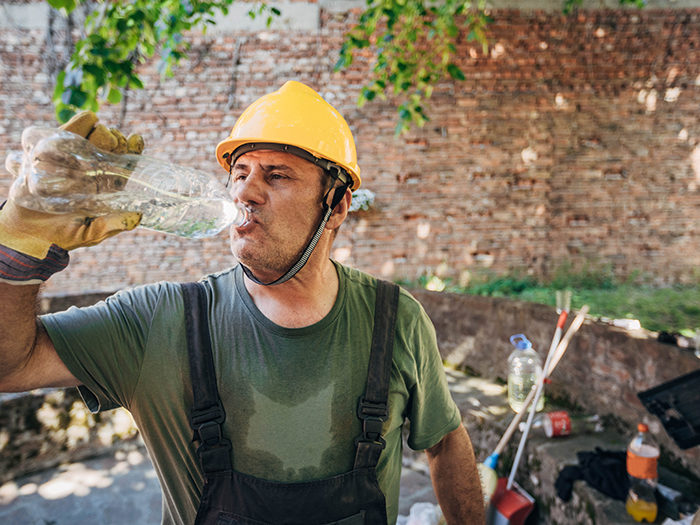Rising Temperatures Increase Workplace Injuries in US

Recent studies on how rising temperatures impact workers find that excessive heat not only leads to direct physiological injuries, but also directly impairs workers’ perceptual, motor and cognitive abilities, increasing the risk of accidents on the job, according to a report by the Workers Compensation Research Institute (WCRI).
Excessive heat exposure above normal limits can reduce the body’s ability to regulate physiological processes, leading to direct heat-related injuries.
“Excessive heat acts on the human body by increasing body temperature above normal levels, with detrimental effects on heart rates, respiratory rates, or blood pressure, which ultimately can lead to heat exhaustion, syncope, fatigue, or cramps,” according to the Occupational Safety and Health Administration (OSHA).
There are two types of work-related injuries caused by heat: direct and indirect. Direct heat-related injuries are of a physiological nature, where the effect of heat on one’s body leads to heat exhaustion, syncope, or cramps. “Excessive heat acts on the human body by increasing body temperature above normal levels, with detrimental effects on heart rates, respiratory rates, or blood pressure, which ultimately can lead to heat exhaustion, syncope, fatigue, or cramps,” per the report.
Indirect heat-related injuries occur when heat impairs the perceptual, motor, or cognitive abilities of workers, leading to accidents. “Examples of such injuries include falling off a ladder on a hot day, or being hit by a vehicle or moving machine at work, as workers’ perception of their surroundings may be impaired on an extreme heat day,” the report noted.
The risk of heat-related injuries varies substantially by industry and occupation, with outdoor workers facing the highest risks. “OSHA identifies several industries with a higher risk of heat injuries or illnesses-mining, quarrying, oil and gas, construction, manufacturing, administrative and support and waste management and remediation services, and transportation and warehousing,” according to the agency.
Workers in these industries, especially those in outdoor occupations, are more likely to experience both direct and indirect heat-related injuries on the job, WCRI reported.
The Effect of Excessive Heat on Work-Related Injuries
Many studies have measured the impact of excessive temperatures on the incidence of heat-related injuries (HRI), the WCRI report noted. One 2023 study found that a staggering 76% of HRI workers’ compensation claims in Washington state occurred on days with a maximum temperature at or above 80°F during the 2021 “heat dome” event. Looking at a longer timeframe from 2006-2017, another study identified the highest rates of HRI in Washington occurring among public administration and agriculture workers.
Recent studies have expanded their scope to measure the overall impact of excessive heat on all work injuries, not just those coded as directly heat-related. One analyzed workers’ comp claims data in Texas and found that same-day claim rates increase by 5% on days with temperatures of 86-88°F and by about 8% on days over 100°F, compared to more temperate days of 59-61°F. Another study had similar findings in California, with injury risk rising significantly on hotter-than-average days.
Importantly, the effects of heat are not felt equally across the workforce. The researchers also found significantly larger effects for men versus women and for younger versus older workers. As temperatures continue to rise from the impacts of climate change, these vulnerable worker populations are poised to bear the brunt of the consequences.
Protective Measures Against Excessive Heat
There is currently no federal occupational health and safety standard to protect workers from heat exposure, but OSHA has outlined recommendations for employers to ensure workers are protected against excessive heat, such as ensuring that workers follow the “20 percent rule” for new workers, drink cool water often, take rest breaks, take shelter in cool or shaded areas, dress for the heat, watch out for fellow workers, and so on.
In the absence of federal standards, several states like California, Washington and Oregon have implemented their own occupational heat stress standards, according to the report. For instance, California’s standard stipulates that protection requirements are triggered at 80ºF and requires that workers drink one quart of water per hour. Employers are required to put in place an acclimatization plan, a heat illness prevention plan, and an emergency response plan.
Access the full report from WCRI here. &








